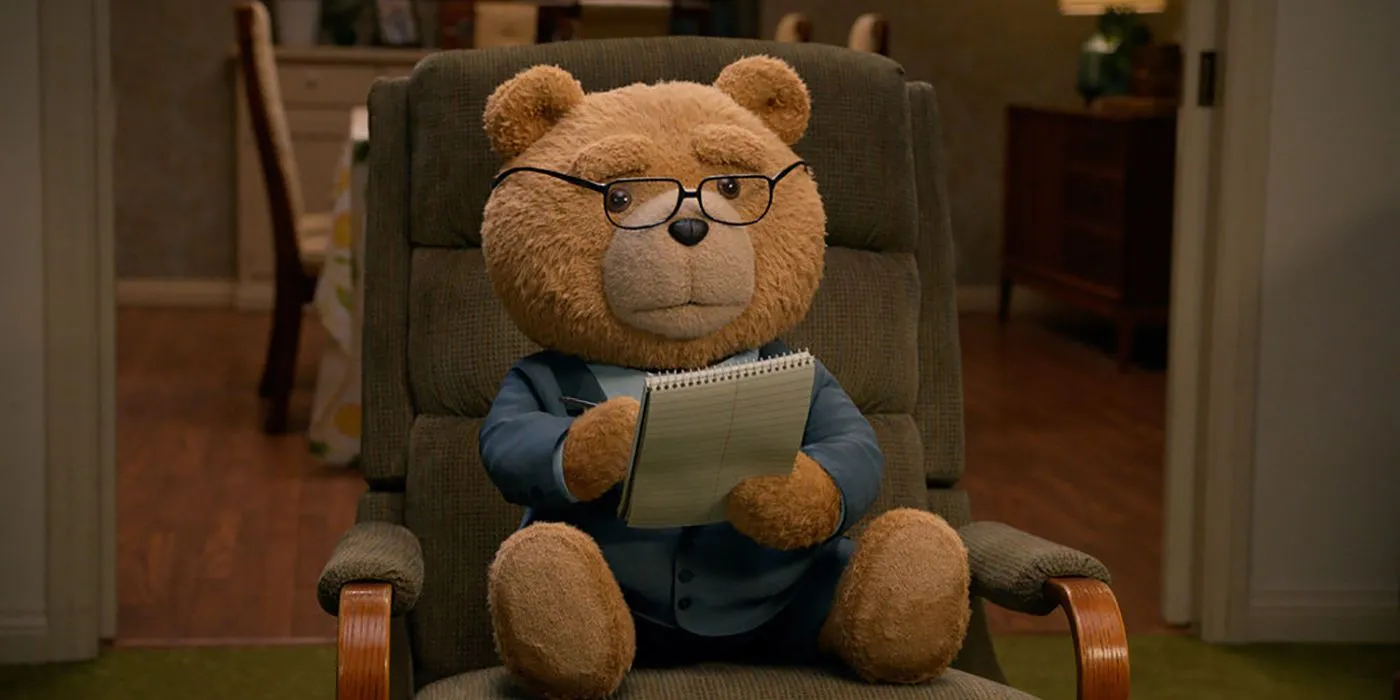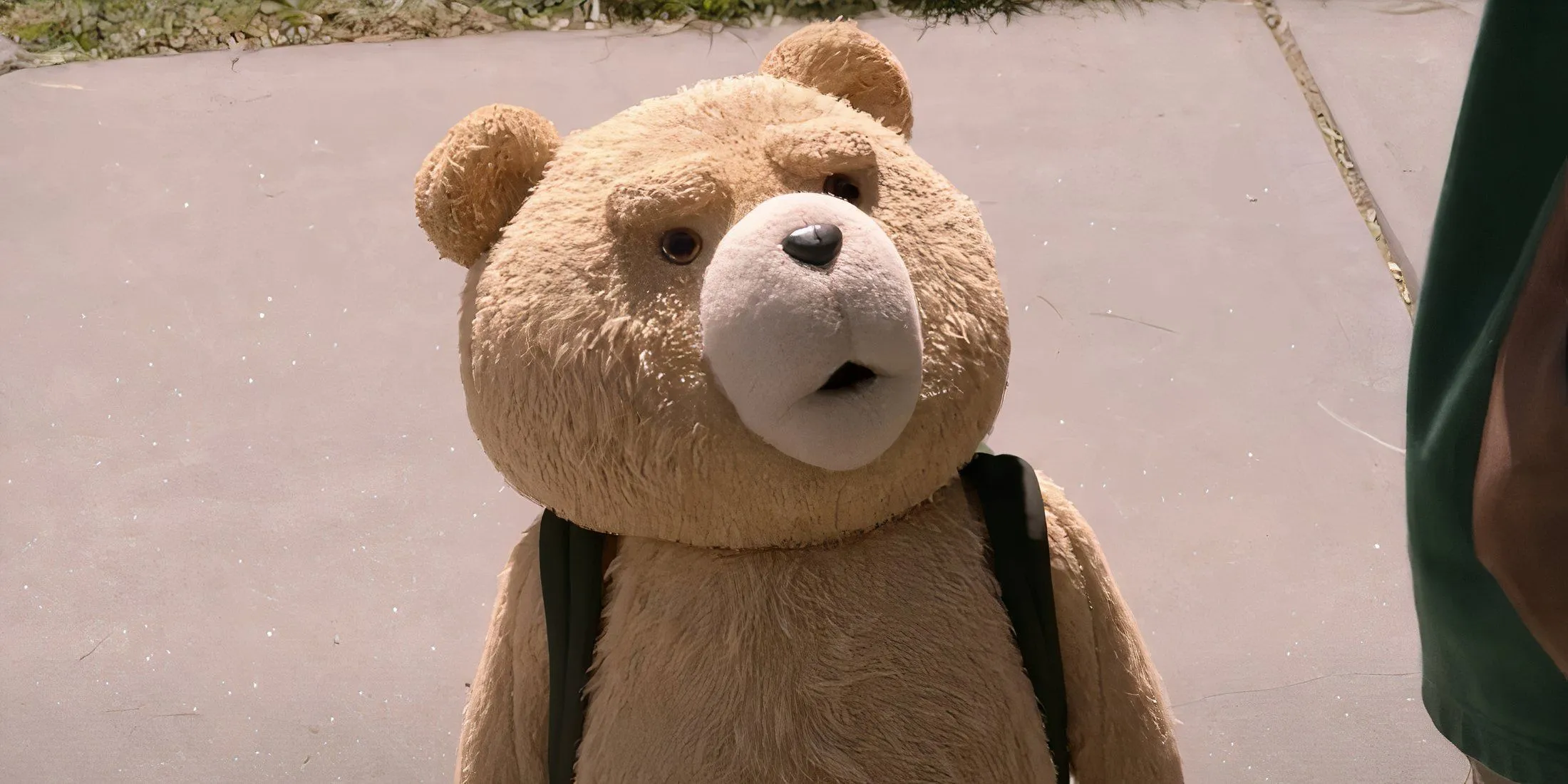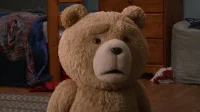Seth MacFarlane’s Ted prequel series has captivated audiences and VFX artists alike, showcasing groundbreaking animation techniques that bring the titular bear to life. Set in the mid-1990s, the original series on Peacock follows the adventures of Ted, voiced by MacFarlane, alongside John Bennett, played by Max Burkholder, as they navigate their high school years. Thanks to the show’s tremendous success, season 2 has been greenlit, with filming completed in January 2025. This new season promises to continue the trend of utilizing advanced visual effects in its 7-episode run.
Recently, the Corridor Crew provided a critique of the VFX from season 1 in their series, “VFX Artists React to Bad and Great CGI”episode 170. Their analysis highlights the impressive nature of Ted’s animation. At timestamp 16:52, the team discusses the simplicity behind the character’s expressive movements, noting how crucial Ted’s head tilts and eyebrow movements are to conveying emotion. According to Wren, the production team adapted their process. While the films employed motion capture for Ted’s character, the series implemented innovative technology that allowed Ted to be virtually integrated into scenes during filming:
[They used] a technology called ViewScreen. It’s essentially just utilizing phones and iPads and doing virtual production. So they were able to actually see, in the scene, Ted composited into the shot – low quality, kinda of jank rander – and they had two different control mechanisms piping into that character. They had a person with an Xbox controller controlling his arms and head motion and stuff like that. They also had an iPhone on Seth MacFarlane, reading his face and piping that into the character as well. And so you would actually have an animated character live on set that everyone on set would be able to see and react to. Including the camera operator knowing how to frame up the shot, all the grips, knowing where to put the lights. It goes back to what I’ve always called “informed intent,”it’s like everyone’s on the same page about what they’re trying to create.
Wren also pointed out that while Ted’s static shots were feasible with relatively simple animation, the character’s movement during more dynamic scenes demanded greater detail. Nevertheless, the results are commendable, with VFX teams successfully integrating Ted to ensure he feels like a natural part of each scene.
https://www.youtube.com/watch?v=Z_t0ONKeldchttps://www.youtube.com/watch?v=Z_t0ONKeldc
Enthusiasm Behind Ted’s Advanced VFX
Commitment to Realism in Animation

The methods employed in animating Ted have evolved significantly since the films, employing new technology that still impresses industry experts with its level of detail. This meticulous attention to realism enhances Ted’s interactions throughout the show, making the CGI character feel convincingly present during comedic escapades. The Corridor Crew’s analysis reinforces the substantial effort that went into refining Ted’s appearance, which, combined with the series’ widespread success on Peacock, suggests that similar techniques will be employed for season 2.
This progress in visual effects symbolizes the advancements made in blending animated characters within live-action contexts, allowing creators to move beyond traditional motion capture methods. With Ted’s animated charm so effectively integrated into the show’s narrative, audiences can anticipate further humorous scenarios in the upcoming episodes.
Reflections on Ted Season 1’s Remarkable VFX
Looking Forward to Season 2’s Innovation

The intricate VFX in Ted season 1 lays a strong foundation for the forthcoming season. As season 2 progresses, the adherence to realistic animation techniques will undoubtedly allow Ted to seamlessly occupy his surroundings while interacting with other characters. This commitment to authenticity not only enhances the storytelling but ensures that the laughs continue to resonate with fans as the series evolves.
Source: Corridor Crew/YouTube


